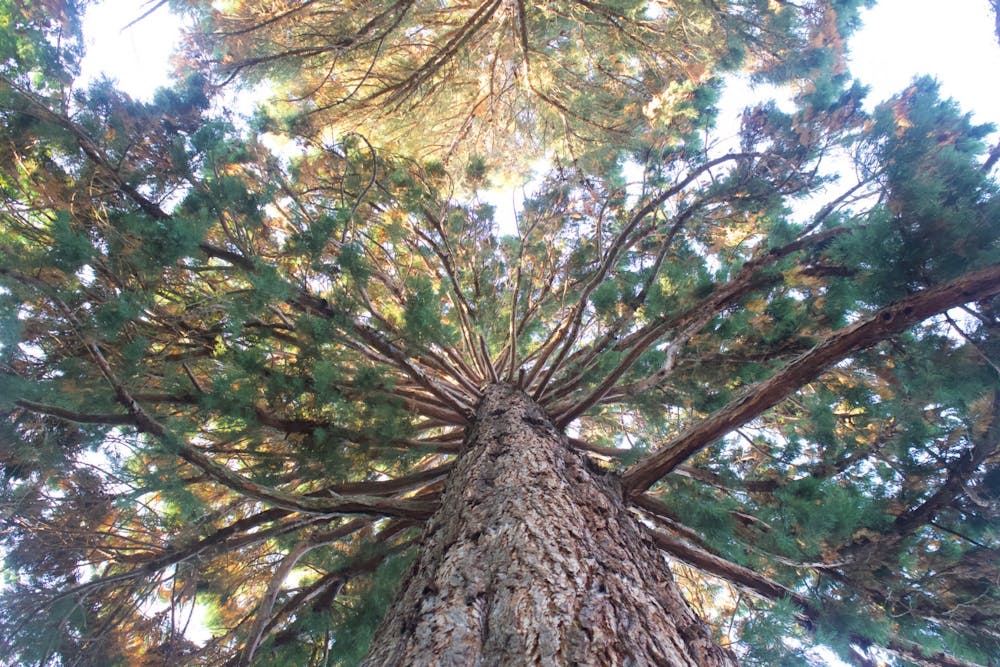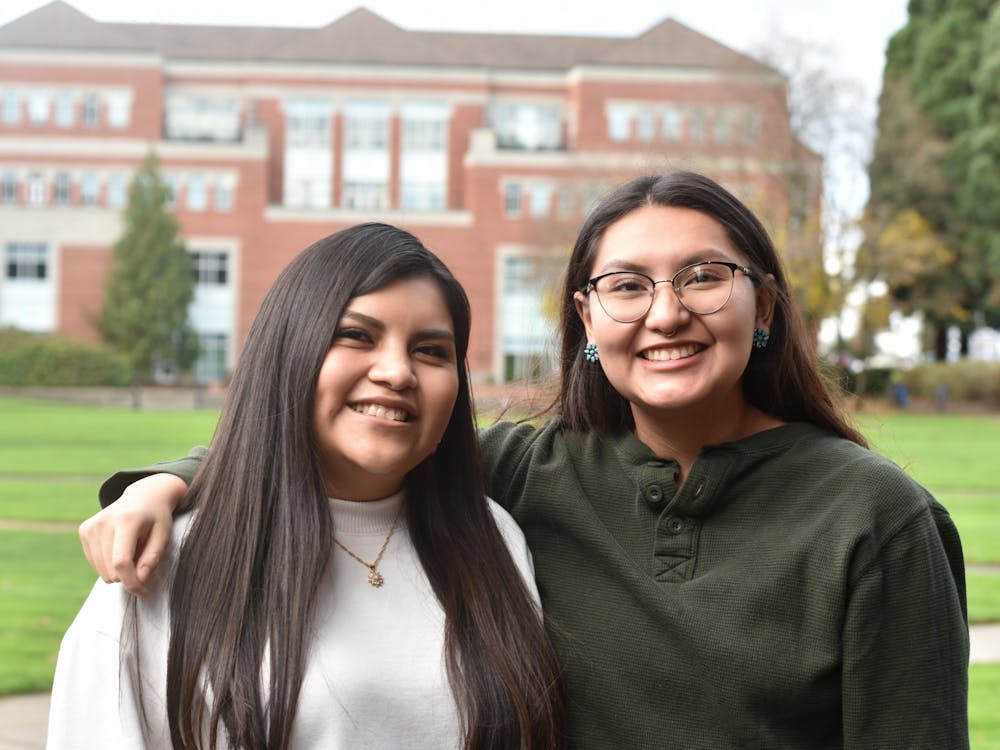It goes without saying that there’s a lot of trees on campus. But what’s more astonishing is the breathtaking variety of trees in such a reasonably small area. UP has everything from shrubs to gargantuan evergreens. Cataloging every type of tree on campus would be a massive undertaking even for a group of student environmental scientists, let alone a single student journalist. That being said, this article surveys only a fraction of the trees on campus. Here are some of the most distinctive trees you’ll find at UP.
Oregon white oak
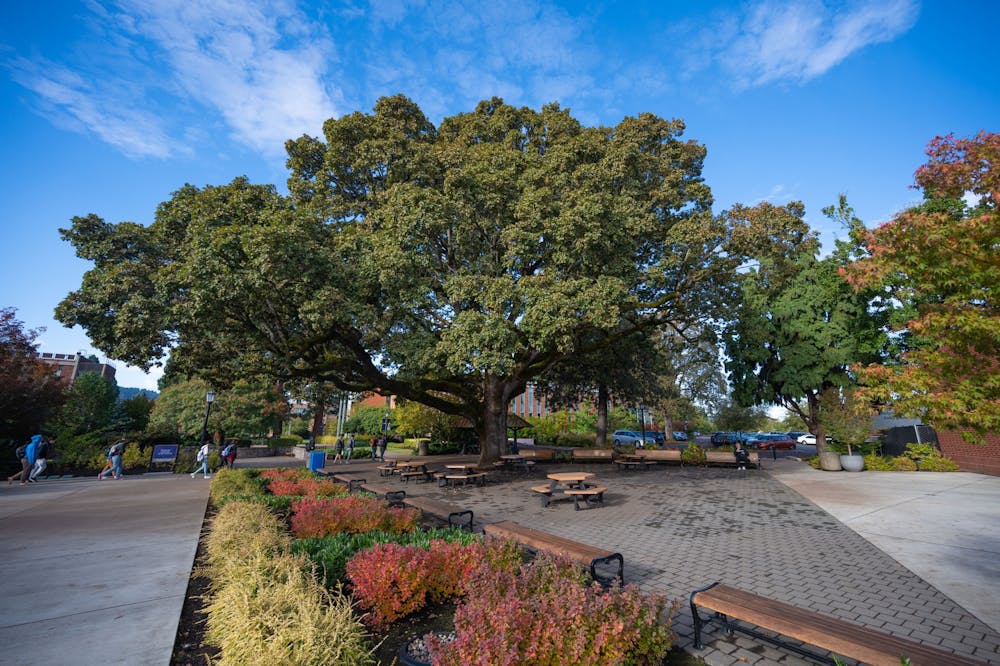
One of the most iconic trees at UP, the Oregon white oak sprouts up in several spots on campus. Some of the largest are on the bluff, but the most prominent one stands beside the bookstore at around 50 feet, its canopy arching 90 feet across.
Native to the Pacific Northwest, Oregon white oaks are just one of about 500 species of oak. Their wood is notoriously hard and is often used for casks and wine barrels in the region. In addition, the wood’s variation in color is often enjoyed by woodworkers, ranging from dark browns to near whites.
Giant sequoia
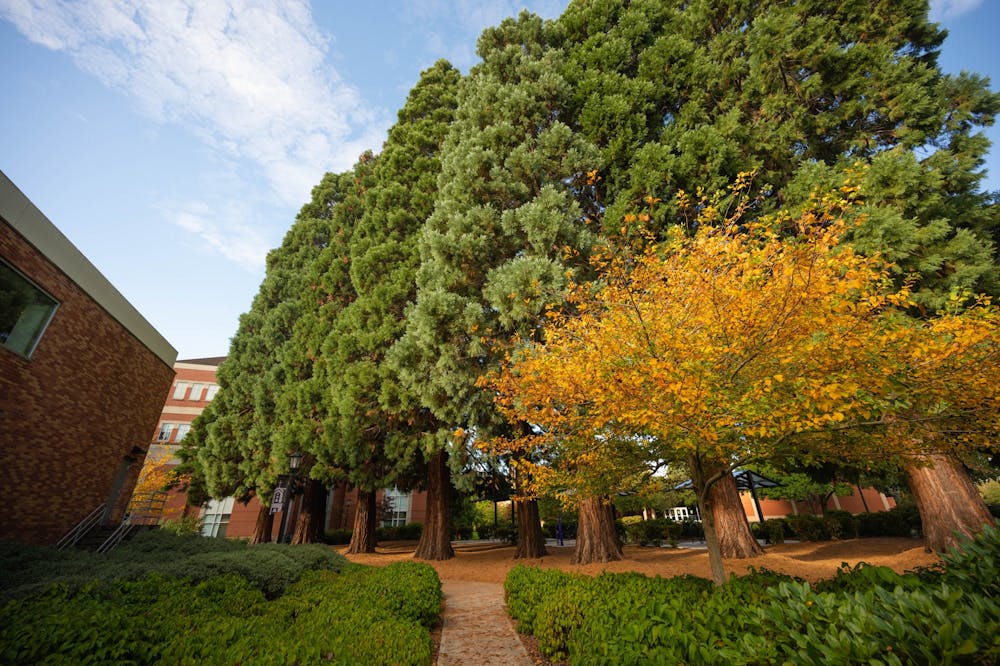
Giant sequoias are the largest trees on Earth, and they’re also among the oldest. Often major tourist attractions, they bring many to their native growths in the Sierra Nevadas and the Oregon and northern California coasts.
They’re one of only three surviving species of redwood. Despite their fire-resistant bark, recent fires of increasing frequency and intensity have destroyed huge populations of sequoias in the region.
UP’s largest and most recognizable are by Clark Library, with heights well over 100 feet and trunks that require several huggers. It’s hard to say how old UP’s sequoias are, but if they were planted around the same time as many others in Portland — around 1900 — ours could be over a century old.
Japanese maple
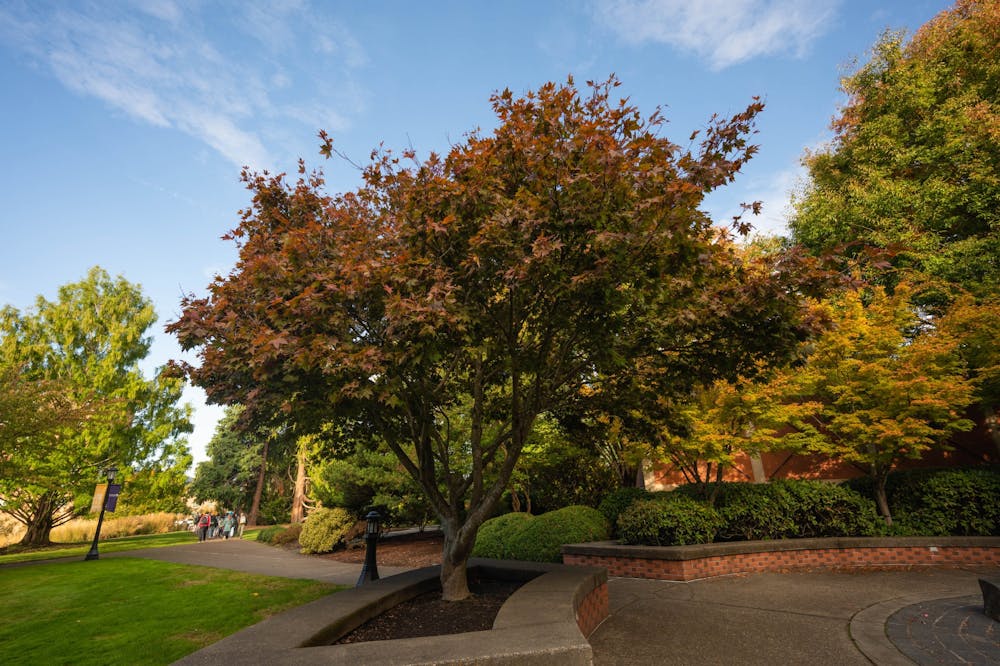
Japanese maples exist in several places on campus, notably by the Buckley Center Auditorium and by the statues outside Mago Hunt. Like their namesake, these maples are native to Japan, though also to China and Korea. Depending on the tree’s environment, its leaves can be anything from bright green to deep red and maroon.
In their natural environment, they typically grow in the shady understory of the forest. However, they’re also temperature-resilient and can thrive in warm environments. A combination of its resilience, vibrancy and size makes it a popular tree for bonsai, the practice of growing and nurturing miniature trees in pots.
Sakura (cherry blossom)
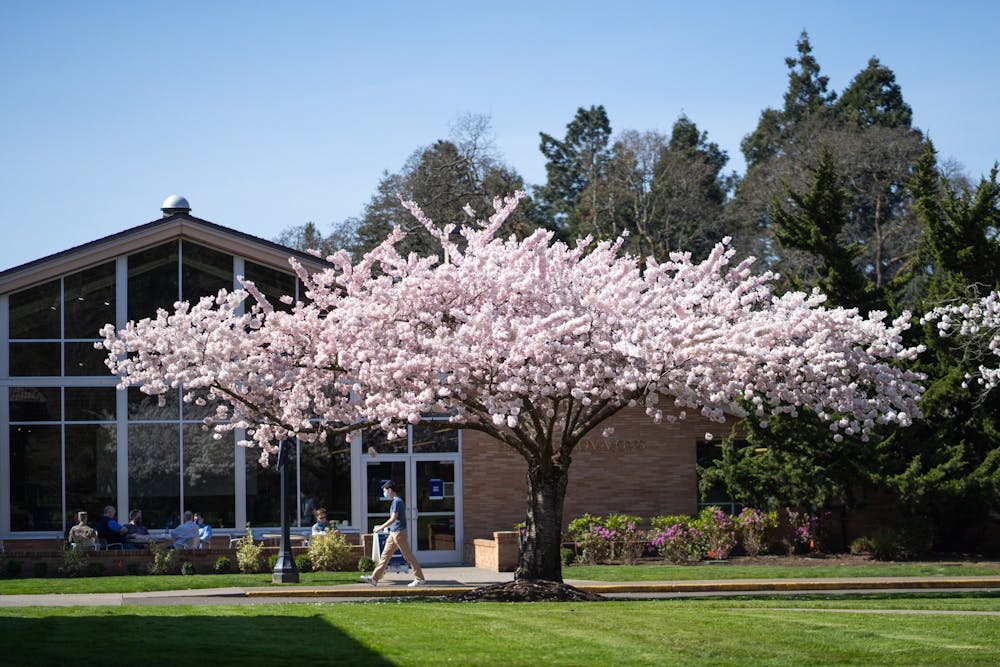
Also native to Japan, Korea and China is the Sakura, or more commonly known as the cherry blossom tree. There are hundreds of cultivars (trees bred for specific traits) around the world, with around 400 species in Europe and North America.
When the cherry trees bloom during the spring, in what seems like one magnificent burst, their flowers blossom bright white and pink all over campus. You’ll find many at the Academic Quad and outside of Mago Hunt Theater.
Returning pilots will know that the bloom is rather short-lived. However, its brevity captures what the tree is often said to symbolize — life’s impermanence and the cycle of life and death.
Nootka cypress
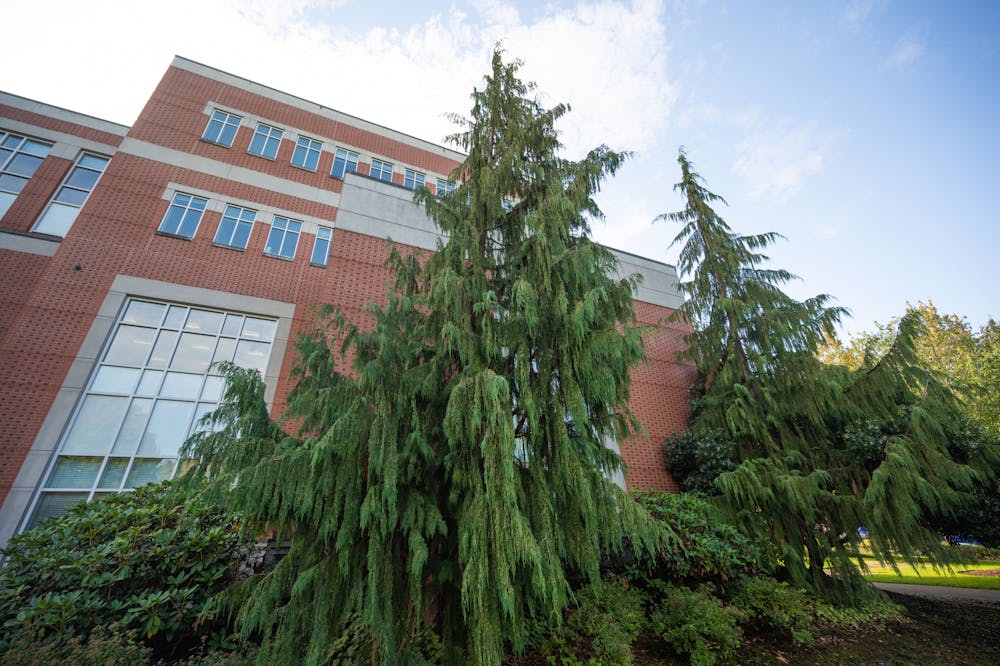
For some, the Nootka cypress might look like a Dr. Suess-ish caricature. These trees are often quite droopy, their branches and needles like shaggy, overgrown hair. You’ll find a few on the north side of Franz Hall on either side of the entrance.
Nootka cypresses, also known as Alaska cedars, are native to the Coast Mountains region, which stretches from southern Alaska down to central Oregon. Some of the cypresses in this region are ancient, with several over 1,000 years old. They’re cold-resistant with thin, anti-fungal bark, and prefer environments with regular precipitation.
London plane

On the south side of Romanaggi Hall is a grove of huge London plane trees. Oftentimes, London planes grow well over a hundred feet tall and have trunks with circumferences sometimes larger than ten feet. Their bright, pale bark is one of the tree's defining features, as well as leaves that often trick many into thinking they’re maples. Interestingly, some research suggests that London planes are effective at absorbing urban pollutants, and many are planted in urban areas.
Pacific madrone

Also found on the bluff are several Pacific madrone trees. These are identifiable by their thin, red-orange bark which peels and uncovers a smooth layer of greenish bark. They can grow to over 80 feet, and some may live over 300 years. Like the characteristic Douglas-firs of Oregon around where they grow, Pacific madrones are native to the Pacific Northwest coast. People have used the tree for various purposes, including for the medical properties of its berries, the wood’s durability, and pleasant color of the bark.
Interested in knowing which campus tree you are? Follow the chart below to figure out which tree you share some roots with:

Riley Martinez is a reporter for The Beacon. He can be reached at martinri24@up.edu.



